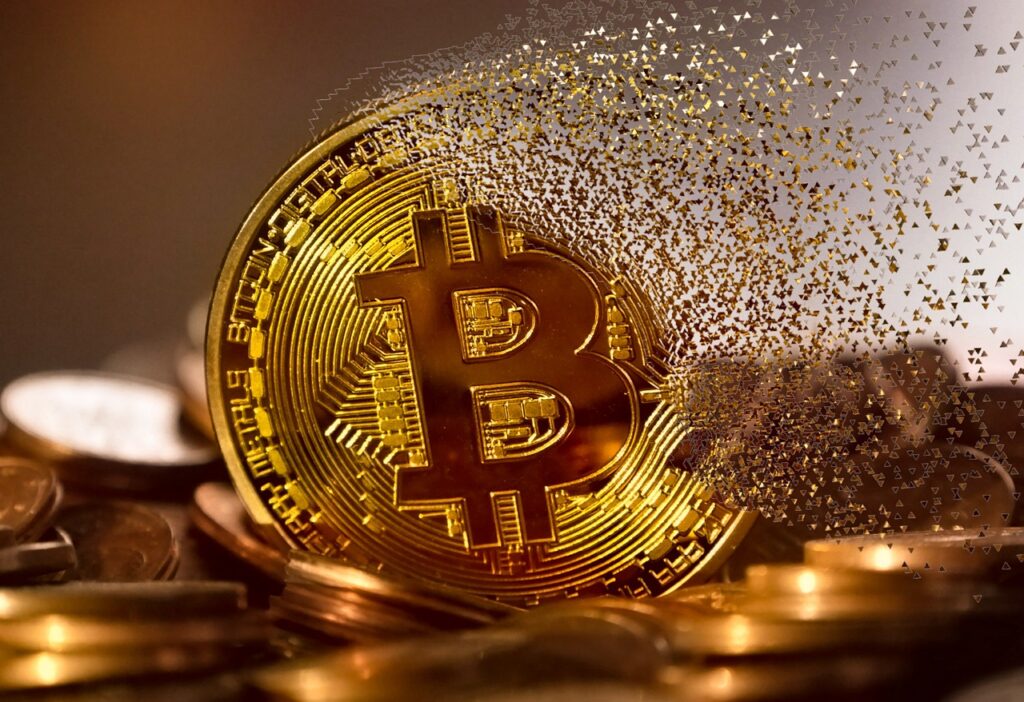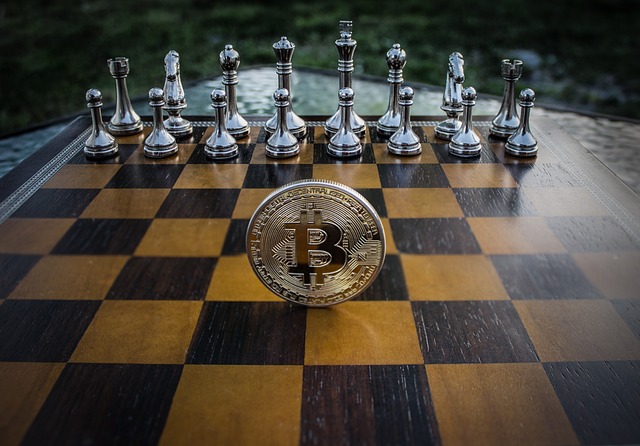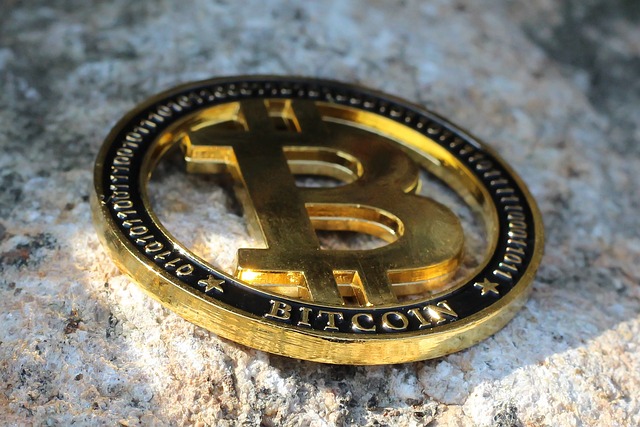From Idea to Reality: The Journey of DeFi Projects
From Idea to Reality: The Journey of DeFi Projects

The Birth of DeFi Projects: How it All Started
Decentralized Finance, or DeFi, has taken the world of finance by storm in recent years. But how exactly did this revolutionary concept come to be? Let’s take a trip back in time to understand the birth of DeFi projects and how it all started.
It all began with the introduction of blockchain technology through the creation of Bitcoin in 2009. Bitcoin opened the floodgates for digital currencies, paving the way for alternative financial systems that operated outside the realm of traditional institutions. As the potential of blockchain technology grew clearer, developers and visionaries started to envision a world where financial transactions and services could be conducted in a trustless and decentralized manner. This marked the inception of DeFi, as it aimed to provide inclusive, open, and transparent financial solutions for everyone, regardless of their geographical location or socioeconomic status.
The Evolution of DeFi: From Niche to Mainstream
The evolution of decentralized finance (DeFi) has been nothing short of remarkable. What started as a niche concept within the crypto community has rapidly gained traction and is now on the path to becoming mainstream. In today’s financial landscape, DeFi projects are no longer viewed as experimental or obscure. Instead, they are being recognized as a viable alternative to traditional financial systems.
One of the key driving forces behind the evolution of DeFi is its ability to provide financial services to underserved populations. Traditional banking systems often exclude individuals who do not meet certain eligibility criteria, such as a minimum account balance or credit score. DeFi projects, on the other hand, aim to be inclusive and accessible to anyone with an internet connection. This has created opportunities for individuals in developing countries with limited access to traditional financial services to participate in global financial markets. As more people realize the potential of DeFi to empower individuals and foster financial inclusion, its mainstream adoption is only set to grow.
Navigating the Challenges: Overcoming Hurdles in DeFi Development
The road to developing decentralized finance (DeFi) projects is not without its fair share of challenges. From technical hurdles to regulatory considerations, navigating through the ecosystem requires a strategic approach and resilience. One of the primary challenges faced by DeFi developers is scalability. As the popularity of DeFi continues to grow, the demand for faster and more efficient transactions increases. However, the scalability of blockchain networks can be a bottleneck, often resulting in slow transaction speeds and high fees. Overcoming this hurdle requires innovative solutions such as layer-two solutions or off-chain scaling techniques, which can help improve the user experience and drive adoption.
Another significant challenge in DeFi development is security. With the decentralized nature of these projects, the responsibility of safeguarding user funds falls on the users themselves. This poses a challenge as it requires users to be more cautious and responsible for their security measures, such as managing their private keys and utilizing secure wallets. Additionally, the inherent complexity of smart contracts leaves room for vulnerabilities and potential exploits. To address this challenge, rigorous security audits and continuous bug bounty programs are essential to ensure the robustness and integrity of DeFi projects. By proactively addressing security concerns, developers can establish trust and confidence among users, fostering the growth and sustainability of the DeFi ecosystem.
The Role of Community: Collaboration and Engagement in DeFi Projects
In the rapidly expanding world of decentralized finance (DeFi), the role of community is paramount. Unlike centralized financial systems that rely on traditional institutions, DeFi projects thrive on collaboration and engagement from its user base.

One of the key advantages of DeFi is its open nature, allowing anyone to participate in financial activities without intermediaries. This inherent openness encourages users to come together, exchange ideas, and work towards common goals. Community members contribute their expertise, share valuable insights, and collaborate with developers and project leaders to enhance the overall functionality and usability of DeFi platforms. This collaboration not only strengthens the projects but also builds a sense of ownership and trust among the community members, creating a virtuous cycle of engagement and innovation.
Building Blocks of DeFi: Understanding the Core Components
DeFi, short for decentralized finance, has gained tremendous popularity in recent years, revolutionizing the traditional financial landscape. To understand the core components of DeFi, it is crucial to grasp the fundamental building blocks that form its foundation. The first building block is blockchain technology, which provides the underlying infrastructure for decentralized applications (DApps) to operate. By using a distributed ledger system, DeFi eliminates the need for intermediaries, offering direct peer-to-peer transactions and financial services to users.
Another essential component of DeFi is smart contracts.

Smart Contracts: The Backbone of DeFi Projects
Smart contracts are at the very core of DeFi projects, serving as the backbone that enables decentralized finance to operate seamlessly. These self-executing contracts are built on blockchain technology, enabling automated transactions without the need for intermediaries. By removing the need for trust in traditional financial systems, smart contracts have revolutionized the way financial services are accessed and executed.
One of the key advantages of smart contracts in DeFi projects is their ability to eliminate the need for intermediaries. Traditional financial transactions often involve multiple parties, each with their own set of fees and delays. With smart contracts, users can interact directly with the code, ensuring quick and cost-effective transactions. Additionally, since smart contracts are stored on the blockchain and cannot be altered once implemented, they provide a high level of transparency and immutability, further enhancing the security and trustworthiness of DeFi projects. Therefore, it’s safe to say that without smart contracts, the decentralized finance ecosystem as we know it today would not be possible.
The Importance of Security: Safeguarding User Funds in DeFi
DeFi projects have gained immense popularity in recent years, offering users the ability to access financial services without relying on traditional intermediaries. However, as the ecosystem continues to expand, the importance of security becomes paramount. Safeguarding user funds is a top priority for all DeFi projects, ensuring that individuals can trust the platform with their hard-earned money.
One of the main ways that DeFi projects protect user funds is through the use of smart contracts.

Interoperability: Connecting DeFi Projects for Greater Utility
As DeFi projects continue to expand and gain popularity, the need for interoperability becomes increasingly apparent. Interoperability refers to the ability of different DeFi projects to connect and interact with each other seamlessly. This is essential for the overall growth and utility of the DeFi ecosystem.
Interoperability allows users to access a broader range of services and benefits from different DeFi platforms, without being limited to just one. By connecting different projects, users can leverage various features and functionalities, enhancing the overall utility and effectiveness of their DeFi experience. For example, a user may want to provide liquidity on one platform and borrow funds on another, without the need to go through tedious and time-consuming processes of transferring assets. Interoperability eliminates these barriers, making it easier for users to navigate the DeFi landscape and access the services they need.
• Interoperability is crucial for the overall growth and utility of the DeFi ecosystem
• It allows users to access a broader range of services from different DeFi platforms
• Users can leverage various features and functionalities by connecting different projects
• It enhances the overall utility and effectiveness of their DeFi experience
• Users can provide liquidity on one platform and borrow funds on another without transferring assets
• Interoperability eliminates barriers, making it easier for users to navigate the DeFi landscape
Regulatory Considerations: Navigating the Legal Landscape of DeFi
As the decentralized finance (DeFi) ecosystem continues to grow and flourish, it is crucial to consider the regulatory landscape surrounding these projects. While the decentralized nature of DeFi platforms presents unique challenges for regulators, it is essential to navigate this legal landscape effectively.
One of the key considerations for DeFi is the characterization of tokens and the applicable regulations governing their issuance and use. Many DeFi projects have introduced new digital assets that may fall under existing securities or commodities laws. As a result, developers and project teams must understand and comply with these regulations to ensure their projects remain compliant and avoid penalties. Additionally, the global nature of DeFi projects requires an understanding of different regulatory frameworks in various jurisdictions, further emphasizing the importance of compliance and legal navigation.
The Future of DeFi: Innovations and Opportunities Ahead
In the world of decentralized finance (DeFi), the future holds immense promise, with a plethora of innovations and opportunities waiting to be explored. One of the key areas of growth in DeFi is the expansion of lending and borrowing platforms. As these platforms continue to mature, we can expect to see improved user interfaces, enhanced liquidity options, and more efficient interest rate mechanisms. This will not only attract more users to participate in DeFi lending, but also allow for the emergence of specialized lending markets, catering to specific industries or asset types.
Another exciting innovation on the horizon is the integration of real-world assets into the DeFi ecosystem. Currently, most DeFi projects primarily deal with digital assets such as cryptocurrencies. However, developers are actively working on bridging the gap between traditional finance and DeFi by tokenizing real-world assets such as real estate, stocks, and commodities. This will not only unlock new investment avenues for individuals, but also bring increased liquidity to traditionally illiquid assets. As the infrastructure for asset tokenization becomes more robust, users will gain access to a wider range of investment opportunities and diversify their portfolios like never before.
What is DeFi?
DeFi stands for decentralized finance, which refers to financial applications and systems that are built on blockchain technology and operate without the need for intermediaries like banks.
How did DeFi projects come about?
DeFi projects emerged as a way to provide financial services that are more accessible, transparent, and inclusive. The concept gained traction with the introduction of Ethereum and the development of smart contracts.
How has DeFi evolved over time?
DeFi has gone from being a niche market to becoming more mainstream. As more people recognize the potential of decentralized finance, the number and variety of DeFi projects have increased significantly.
What are the challenges in developing DeFi projects?
Developing DeFi projects can be challenging due to technical complexities, security concerns, and regulatory considerations. However, these challenges are being addressed through collaboration and innovation.
How important is community involvement in DeFi projects?
Community involvement is crucial in DeFi projects. The active participation and collaboration of users, developers, and stakeholders help drive the growth and success of these projects.
What are the core components of DeFi?
The core components of DeFi include smart contracts, decentralized exchanges, lending and borrowing platforms, stablecoins, and oracles. These elements work together to create a decentralized financial ecosystem.
Why are smart contracts important in DeFi?
Smart contracts are the backbone of DeFi projects. They enable the automation of financial transactions, eliminate the need for intermediaries, and ensure transparency and trust in the ecosystem.
How is the security of user funds ensured in DeFi?
Security is a top priority in DeFi. Various measures such as code audits, multi-signature wallets, and insurance protocols are in place to safeguard user funds and protect against potential hacks or vulnerabilities.
Can different DeFi projects connect and work together?
Yes, interoperability is an important aspect of DeFi. By connecting different DeFi projects, users can access a wider range of financial services and increase the overall utility and efficiency of the ecosystem.
What are the regulatory considerations for DeFi?
DeFi projects need to navigate the legal landscape and comply with relevant regulations. As the space continues to evolve, regulators are developing frameworks to address the unique challenges and opportunities posed by decentralized finance.
What does the future hold for DeFi?
The future of DeFi looks promising, with innovations and opportunities on the horizon. We can expect to see advancements in scalability, user experience, and the integration of traditional finance with decentralized systems.
Todays Featured Product:
Buy, exchange and grow your crypto securely with a Ledger hardware wallet, combined with the Ledger Live app. It’s never been easier to keep your crypto safe and accessible. Buy direct from Ledger.com and get todays Special Offers Here.




